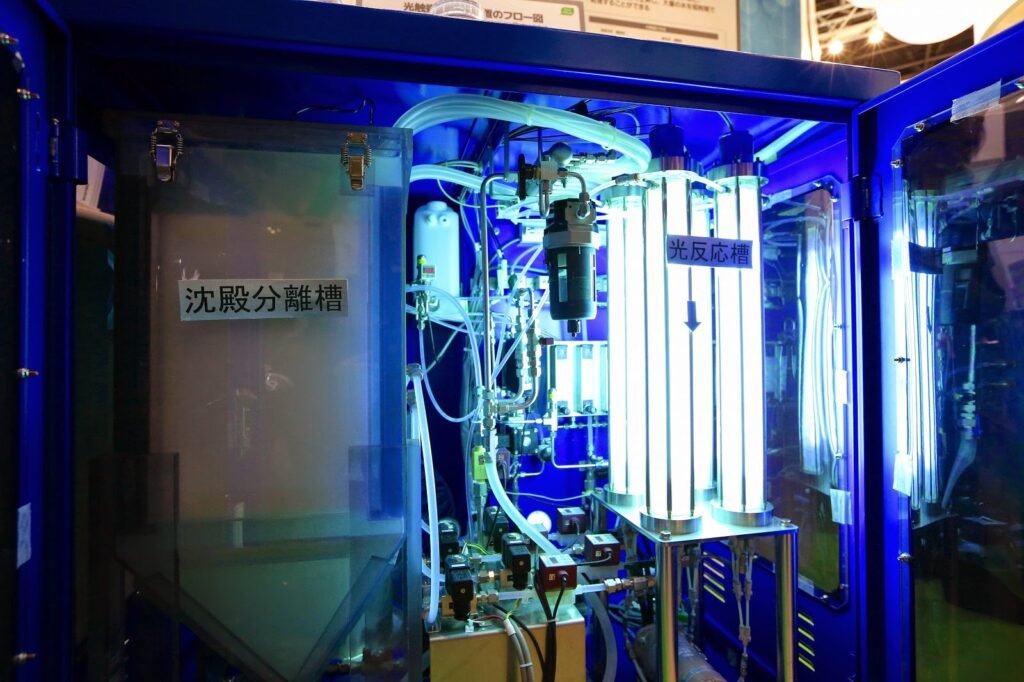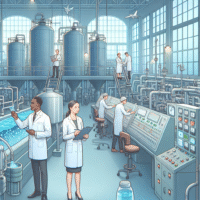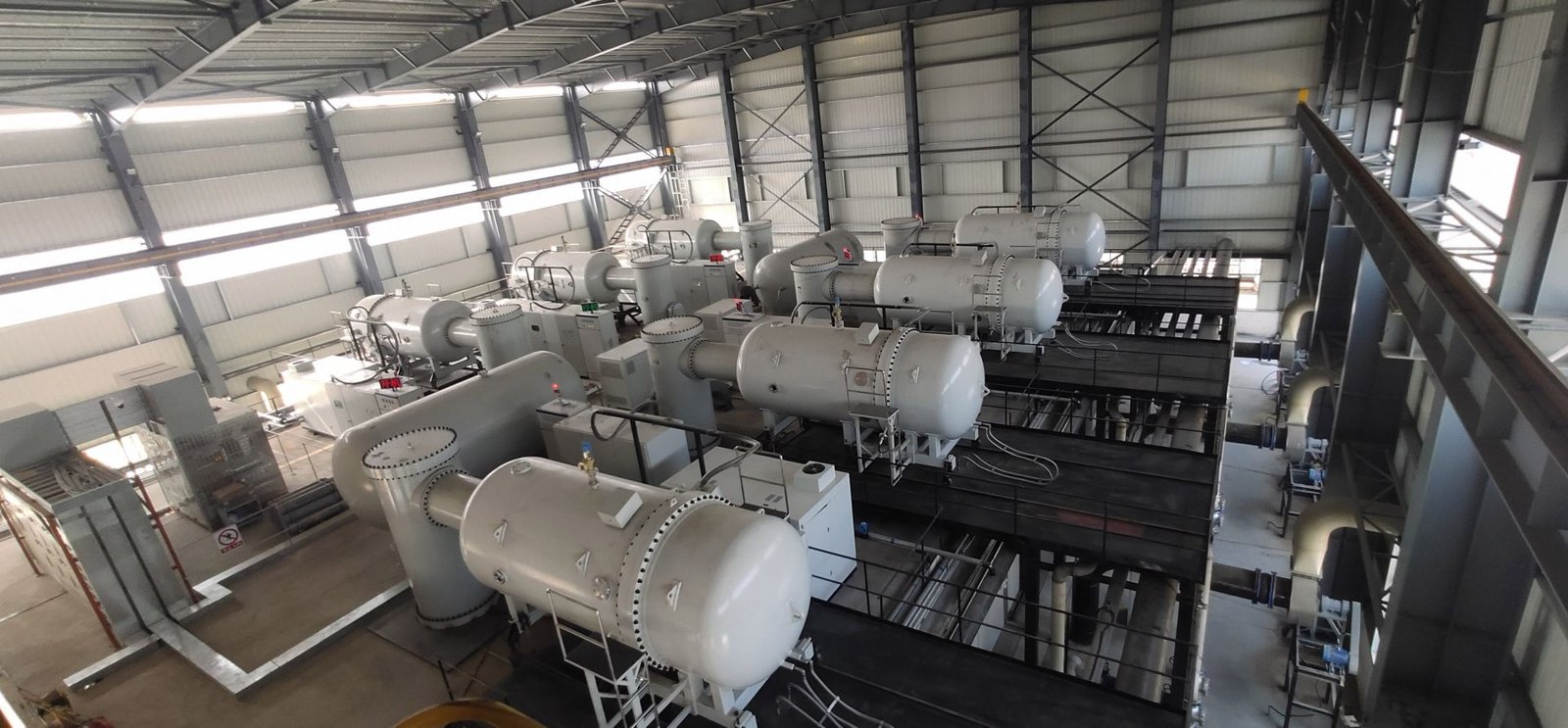Photocatalytic Water Purification

Photocatalytic Water Purification: A Sustainable Solution for Clean Water
Access to clean and safe drinking water is a critical issue that affects millions of people around the world. Waterborne diseases caused by contaminated water sources lead to hundreds of thousands of deaths each year, particularly in developing countries where access to clean water is limited. Traditional water purification methods such as chlorination and filtration can be effective, but they are often costly, require complex infrastructure, and can have negative environmental impacts.
In recent years, researchers and engineers have been exploring new and innovative technologies for water purification, and one promising method that has emerged is photocatalytic water purification. This process harnesses the power of sunlight and a photocatalyst to remove pollutants and pathogens from water, offering a sustainable and efficient solution for clean water.
How Does Photocatalytic Water Purification Work?
Photocatalytic water purification is based on the principle of photocatalysis, a process in which a photocatalyst is activated by light to initiate chemical reactions. In the context of water purification, a photocatalyst such as titanium dioxide (TiO2) is dispersed in water contaminated with pollutants or microorganisms. When exposed to sunlight or artificial light, the photocatalyst absorbs photons and generates electron-hole pairs, which then react with water molecules and contaminants to produce reactive oxygen species (ROS) such as hydroxyl radicals.
These ROS are highly reactive and have strong oxidizing properties, allowing them to break down organic pollutants, pathogens, and other contaminants in water. The photocatalytic process is typically fast and efficient, and it does not require the use of chemicals or filters, making it a cost-effective and environmentally friendly technology for water purification.
Advantages of Photocatalytic Water Purification
Photocatalytic water purification offers several advantages over traditional methods of water treatment. Some of the key benefits of this technology are:
1. Versatility: Photocatalytic water purification can be used to treat a wide range of water sources, including surface water, groundwater, and wastewater. It is effective at removing a variety of contaminants, including organic compounds, heavy metals, and pathogens, making it a versatile solution for different water treatment applications.
2. Cost-effectiveness: Photocatalytic water purification does not require the use of chemicals or filters, which can be expensive and require frequent maintenance. Once the photocatalyst is installed, the process is largely self-sustaining and can be operated using natural sunlight, reducing operational costs and making it a cost-effective technology for water purification.
3. Environmental sustainability: Unlike traditional water treatment methods that rely on chemical disinfectants and filtration systems, photocatalytic water purification is a green technology that does not produce harmful byproducts or generate waste. It relies on the natural power of sunlight to drive the photocatalytic reaction, making it a sustainable solution for clean water.
4. Pathogen removal: One of the key advantages of photocatalytic water purification is its ability to inactivate and eliminate microbial pathogens such as bacteria, viruses, and protozoa. The reactive oxygen species produced during the photocatalytic process can penetrate the cell membranes of microorganisms and disrupt their cellular processes, effectively sterilizing the water and making it safe for drinking.
Applications of Photocatalytic Water Purification
Photocatalytic water purification has a wide range of applications in different sectors, including:
1. Drinking water treatment: Photocatalytic water purification can be used to treat drinking water from municipal water supplies, surface water sources, or contaminated wells. By removing pollutants and pathogens, this technology can provide safe and clean drinking water for communities without access to reliable water treatment facilities.
2. Wastewater treatment: Photocatalytic water purification can be integrated into wastewater treatment plants to remove organic pollutants, heavy metals, and pathogens from domestic and industrial effluents. It can help to improve the quality of treated wastewater and reduce the environmental impact of discharge into rivers and oceans.
3. Point-of-use water purification: Photocatalytic water purification systems can be installed at the household level to provide safe drinking water for individual households or small communities. These decentralized systems can be powered by solar panels or artificial light sources, making them suitable for off-grid locations or emergency situations.
4. Swimming pool and spa treatment: Photocatalytic water purification can be used to maintain the cleanliness and hygiene of swimming pools, spas, and other recreational water bodies. By continuously treating the water with a photocatalyst, it can prevent the growth of algae, bacteria, and other microorganisms, reducing the need for chemical disinfection.
Challenges and Limitations of Photocatalytic Water Purification
While photocatalytic water purification has many advantages, it also faces several challenges and limitations that need to be addressed for successful implementation:
1. Efficiency: The efficiency of photocatalytic water purification depends on several factors, including the type of photocatalyst used, the intensity and duration of light exposure, and the concentration and nature of contaminants in the water. Improving the efficiency of the photocatalytic process and optimizing the operating conditions are ongoing challenges for researchers and engineers.
2. Reactor design: The design of photocatalytic reactors plays a key role in the performance and scalability of water purification systems. Factors such as the surface area of the photocatalyst, the flow rate of water, and the distribution of light sources can impact the overall effectiveness of the process. Developing efficient and cost-effective reactor designs is essential for the successful implementation of photocatalytic water purification.
3. Photocatalyst stability: Some photocatalysts, such as titanium dioxide, can degrade over time due to fouling, photocorrosion, or leaching of metal ions, which can reduce their effectiveness for water purification. Developing stable and durable photocatalysts that can withstand harsh operating conditions and maintain their catalytic activity over extended periods is a key research challenge in the field of photocatalysis.
4. Byproduct formation: While photocatalytic water purification generally produces fewer harmful byproducts compared to traditional treatment methods, some studies have reported the formation of toxic intermediates or byproducts during the photocatalytic process. Understanding the mechanisms of byproduct formation and minimizing their release into the environment are important considerations for safe and sustainable water treatment.
Future Directions and Innovations in Photocatalytic Water Purification
Despite the challenges and limitations faced by photocatalytic water purification, ongoing research and innovation in the field are driving the development of new technologies and solutions. Some of the key areas of focus for future advancements in photocatalytic water purification include:
1. Development of novel photocatalysts: Researchers are exploring new materials and nanostructures with enhanced photocatalytic activity and stability for water purification. By tailoring the properties of photocatalysts such as bandgap energy, surface area, and crystal structure, it is possible to improve their performance and efficiency for treating different types of contaminants.
2. Integration of advanced technologies: Combining photocatalytic water purification with other advanced technologies such as membrane filtration, electrochemical oxidation, or hybrid systems can enhance the overall treatment efficiency and water quality. By synergistically combining different treatment processes, it is possible to achieve higher removal rates and lower operating costs for water purification.
3. Scale-up and commercialization: Scaling up photocatalytic water purification systems for large-scale applications and commercialization requires overcoming technical, economic, and regulatory challenges. Developing standardized protocols, pilot studies, and demonstration projects can help to validate the effectiveness and feasibility of photocatalytic water purification in real-world scenarios and attract investment for scaling up production and deployment.
4. Monitoring and control: Monitoring the performance of photocatalytic water purification systems and controlling operating parameters such as light intensity, pH, and temperature are crucial for ensuring consistent and reliable treatment outcomes. Integrating sensors, automation, and remote monitoring technologies into water purification systems can help to optimize performance, minimize energy consumption, and ensure compliance with water quality standards.
Conclusion
Photocatalytic water purification is a promising and sustainable technology that offers a cost-effective and environmentally friendly solution for clean water. By harnessing the power of sunlight and a photocatalyst, it can effectively remove pollutants, pathogens, and other contaminants from water sources, providing safe and drinkable water for communities around the world.
While there are challenges and limitations to overcome, ongoing research and innovation in the field of photocatalytic water purification are driving the development of new technologies, materials, and approaches to improve treatment efficiency, scalability, and reliability. By working towards these goals and collaborating with policymakers, industry partners, and stakeholders, we can harness the potential of photocatalytic water purification to address the global water crisis and ensure access to clean water for all.



